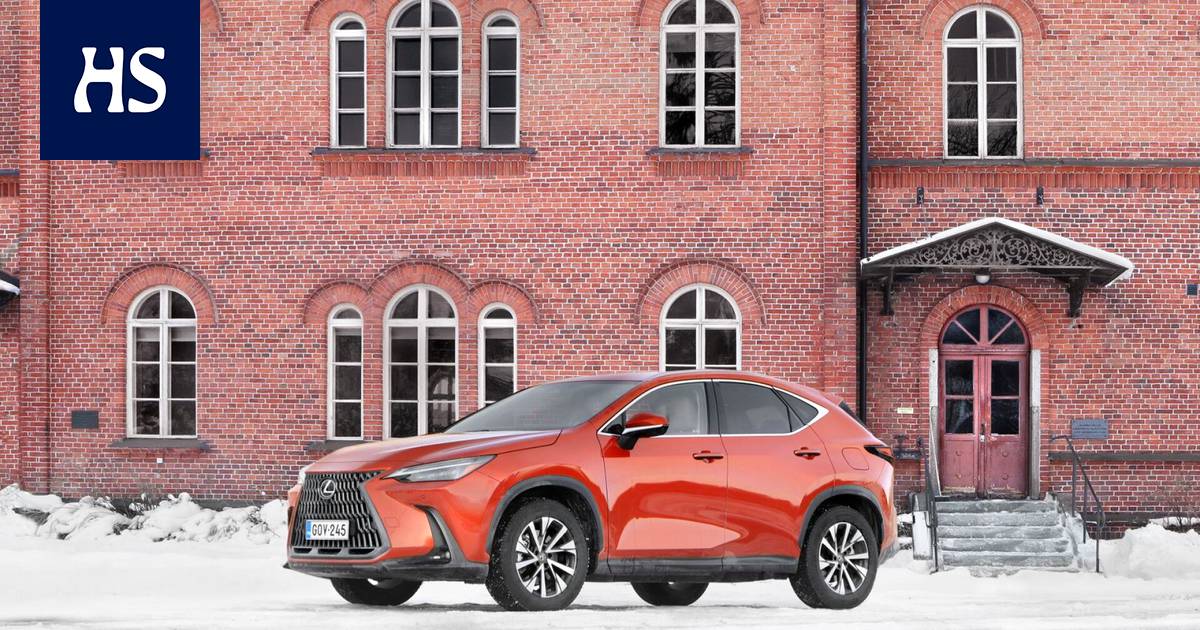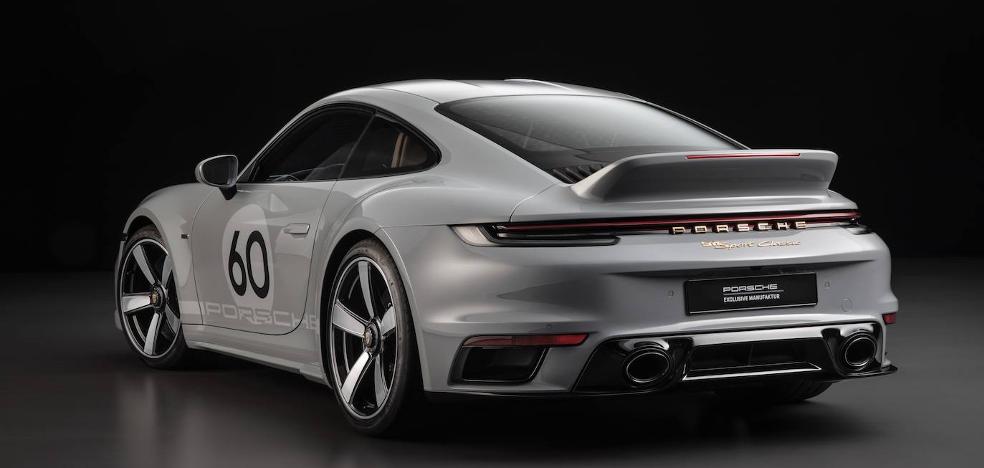The rechargeable Lexus NX 450h is efficient and economical.
Finns like Toyota, but so-called premium cars are bought elsewhere than in Asia. Thus, it could be concluded that the demand for the Lexus brand Toyota has remained modest. Luxury Lexuses are sold a few hundred a year, less than a tenth of Audi’s sales, for example.
Premium cars from other Asian manufacturers, such as Nissan’s Infiniti or Hyundain Genes, aren’t even offered to us.
Like its parent brand Toyota, Lexus has long been known for its hybrid cars. The Japanese giant has been a pioneer in their development. Toyota’s hybrid technology is already in its fourth generation, with many other manufacturers just starting out.
The medium-sized SX SUV under review is Lexus’ most popular model in Europe. It is basically a luxury version of the Toyota RAV4. The technology and basic structure are the same as in Toyota, but Lexus has a more sophisticated feel.
When the Toyota RAV4 is available as a charging hybrid for € 50,000 to € 60,000, depending on the equipment level, the NX 450h is priced at € 66,000 to € 76,000 before the accessories.
Instead of a handle, the Lexus has an release switch.
Starting point is excellent. As a charging hybrid, the Toyota RAV4 is as versatile as the MacGyver link knife. The RAV4 is powerful, spacious, economical and four-wheel drive, and travels up to 80 kilometers on electricity alone. It is perhaps the best plug car in its price range.
So the Lexus NX 450h should be able to do all this, but a little more stylish. Let’s see.
In the parking lot, the round-shaped Lexus may not be recognized as a cousin of the square RAV. However, the external dimensions are almost the same. The bow is dominated by a huge grille representing the current style of Lexus, reminiscent of whale whims or some sort of giant beard trimmer. The car looks as if it is ready to devour the smaller sints in its jaws.
There is nothing wrong with seating comfort.
When you enter the cab, you can see what the price tag is made of. The softly padded brown leather interior holds quite a bit of comfort electronics. The extra money will get a 14-speaker Mark Levinson stereo system. It is worth listening to jazz while driving in the Helsinki evening. The cab isolates the sounds of urban life from the outside.
Luxury priced products always need a background story as a spice. Lexus ’brand catalog highlights Takumi engineers who continue the Japanese craft tradition and tirelessly inspect every detail and leather stitching at the factory. In practice, the car is a Toyota with a finer interior, but there is nothing wrong with comfort and finish.
A physical scroll is left to adjust the temperature.
Special the detail is that the doors have no handles on the inside at all, but an electronic release button. The car guards the surrounding traffic and prevents drivers from accidentally opening the door if, for example, a cyclist is coming from behind.
Another specialty can be found at the wheel. The views of the instrument cluster are unexpectedly adjusted via the windscreen reflection screen, ie when the steering wheel thumbs are pressed, the menu views first appear on the windscreen, from where they can be picked up in the instrument cluster. The unique solution feels confusing and requires attention until you somehow get used to it.
The gear selector diagram is recycled from the Toyota Prius: you move forward by moving the leather-covered butt to the left and down, and the kit shifts to the left and up.
The cab is designed to meet the needs of the driver.
In the importer’s yard, the battery is full, so let’s see how far there is enough power right out of the box. By switching on the electric driving mode, Lexus silently flies 69 kilometers around the metropolitan area before the petrol plane on the bow rumbles quietly. It’s a good performance in zero weather, and you can definitely go further by driving smartly in warm weather. In everyday life, the NX 450h practically acts as an electric car if it is always fully charged at home.
However, charging is slowed down by the fact that the car charger can only use one phase of mains electricity. A full 6.6 kilowatts of charging power therefore requires as much as a 32 amp fuse. It needs to be refilled, as the battery capacity with buffers is 18.1 kilowatt hours. Still, even with a standard 10A fuse, the car fills up during the night.
There is enough legroom.
The hybrid system from Lexus, and therefore from Toyota, is a great example of engineering skill. The bow has a 2.5-liter gasoline engine with two electric motor-generators. This charging hybrid also has a third electric motor at the rear that allows four-wheel drive. A system that can be explained in a complex way works like an idea. There is no gearbox in the traditional sense, but the system is stepless.
Power is 227 kilowatts, or 305 horsepower, and the NX accelerates from zero to one hundred in about six seconds. When you press the gas, the car rushes forward – the bow rises and the engine comes to life. A hint of rough-sounding machine makes a small distortion to Lexus ’civilized charm, but the scenery changes quickly.
The view of the instrument panel reminds us that the car is Toyota in its soul.
The real engineering trick is that despite the good performance, the car is economical even when running on an empty battery. Lexus now took just six gallons per hundred without charging. I haven’t gotten the same with any other hybrid in the same size range.
The NX is a pretty spacious car, like its sister RAV4. At Toyota, I once managed to carry a two-foot and heavy-duty futon sofa bed. I didn’t pack furniture for Lexus now, but there is enough space for living and transporting here as well.
The container pulls 545 liters. There is a hiding place under the bottom for the charging cables.
In general, there is nothing wrong with driving. The chassis filters the road bumps admirably, and the steering is suitably heavy, if not extremely sensitive. The “autopilot” or active lane guidance system steers the car in the flow of traffic nicely, and the assistant can be conveniently turned on and off at the touch of a button.
The test model had a larger 14-inch touch screen. It dominates the cab view and is comfortably turned towards the driver. Physical switches have been pruned from the cab and functions transferred to the screen, but operation is smooth. Lexus also doesn’t have to put up with Toyota’s Ada-time map system.
Competitors include the Bemarin X3, Mersun GLC and Volvo XC60. Lexus is the least economical of these. Toyota’s hybrid technology has also proven to be reliable. The driving battery is guaranteed for 10 years or 350,000 kilometers, as long as the car is serviced by a dealership.
Compared to its more popular sister RAV4, the extra price of more than ten tons for the Lexus version of the car may still be hard to justify, at least in common sense.
Lexus NX 450h + AWD Executive
+ Efficient and economical power line, good range with electricity, comfortable
– Single-stage charging, equipped with price
-
Power: total hybrid power 227 kW (305 hp), electric motor front 134 kW and rear 40 kW
-
Acceleration: 6.3 seconds 0-100 km / h
-
Top speed 200 km / h
-
Battery: 18.1 kWh (gross)
-
Charging: AC max 6.6 kW (1x32A)
-
Operating distance: 74 km indicated, test drive 69 km
-
Consumption: wltp consumption 1 liter / 100 km (combined), test drive with empty battery 6 liters / 100 km
-
Co2 emissions: depending on charge, wltp 25 g / km
-
Dimensions and masses: length 4 660 mm, width 1 865 mm, height 1 660 mm, unladen weight 2 000 kg
-
Trailer: 750 kg without brakes / 1,500 kg with brakes
-
Cargo space: 545 – 1,436 liters
-
Price: from 66,000 euros, test car 73,628 euros
#Test #drive #seconds #liters #Lexus #SUV #hybrid #technology #excellent








